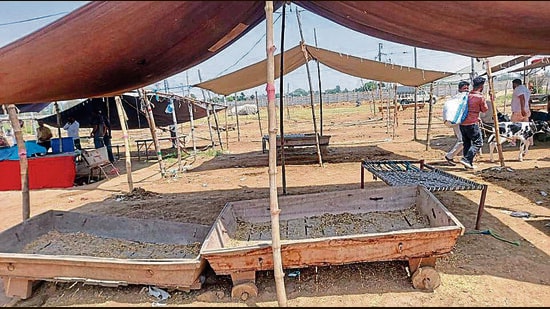New Delhi: India has begun a detailed sector-wise analysis, drawing up multiple scenarios, to prepare for a possible increase in tariffs on product exports to the United States under the Donald Trump administration, multiple people familiar with the matter told ET.“Ministries and departments are examining various scenarios, apprehending such a move by the US and possible remedies,” one of the persons said.
Addressing US Concerns
Officials maintain that India’s most favoured nation (MFN)-weighted average import tariff is quite low at about 5%-6%. Select agricultural products faced higher tariffs, but even those are much lower than the rates bound at the World Trade Organisation (WTO).Most countries, including the US, apply high tariffs as well as several non-tariff barriers on agri goods, they said. For example, dairy products, fruits and vegetables, cereals and food preparations, and oils face tariffs as high as 130%-190% in the US.Another person said any firm assessment of impact or measures needed can be made only after a concrete announcement by the Trump administration, which will take charge on January 20.Experts said New Delhi also has the option of imposing retaliatory tariffs or approaching the WTO even as they suggested a strategic approach.“There is no harm in relooking at some of the products on which India can tweak tariffs to address the concerns of the US,” said one of the experts who did not wish to be identified due to the sensitivity of the matter.While tariffs are WTO bound or linked to MFN status between nations and not country-specific, there is a view that a calibrated approach can be adopted when looking at the list of products traded between India and the US.“It is not possible for India to have country specific tariffs because it violates most-favoured nation (MFN) principle,” said Ajay Sahai, director general of Federation of Indian Export Organisations (FIEO).Sahai is of the view that India can relook at some of the tariff lines and strategize accordingly even if it means a marginal duty loss to the nation on some of the products.Ajay Srivastava, founder of international trade consulting firm Global Trade Research Institute, said, “Even though Trump’s claims about Indian tariffs may be overstated, India can seize this moment to strategically review its tariff structure.”He, however, said Indian tariffs comply with WTO rules while the proposed Trump tariffs would violate them.“A targeted reduction in tariffs could be advantageous for India, aligning with its goal of boosting low-cost, value-added manufacturing and trade,” Srivastava said, adding that an inter-ministerial review of tariffs could help India avoid international scrutiny and bolster its trade policy, aligning it with national economic priorities.Arpita Mukherjee, professor at economic policy think tank Indian Council for Research on International Economic Relations (ICRIER), said India and the US do not have a trade agreement and WTO’s dispute settlement is not working. So, either country can threaten to be protectionist.“So, the best option is to reduce tariffs unilaterally. Second option may be to negotiate a trade agreement with the USA,” Mukherjee said.India’s high tariffs are questioned by many other countries, she said.Echoing similar views, Agneshwar Sen, partner – tax and economic policy (international trade) at Ernst & Young India, said India should get ready to do a deal with the US and provide some concessions on goods which are of importance to them, including some agricultural goods or high-end bikes.







